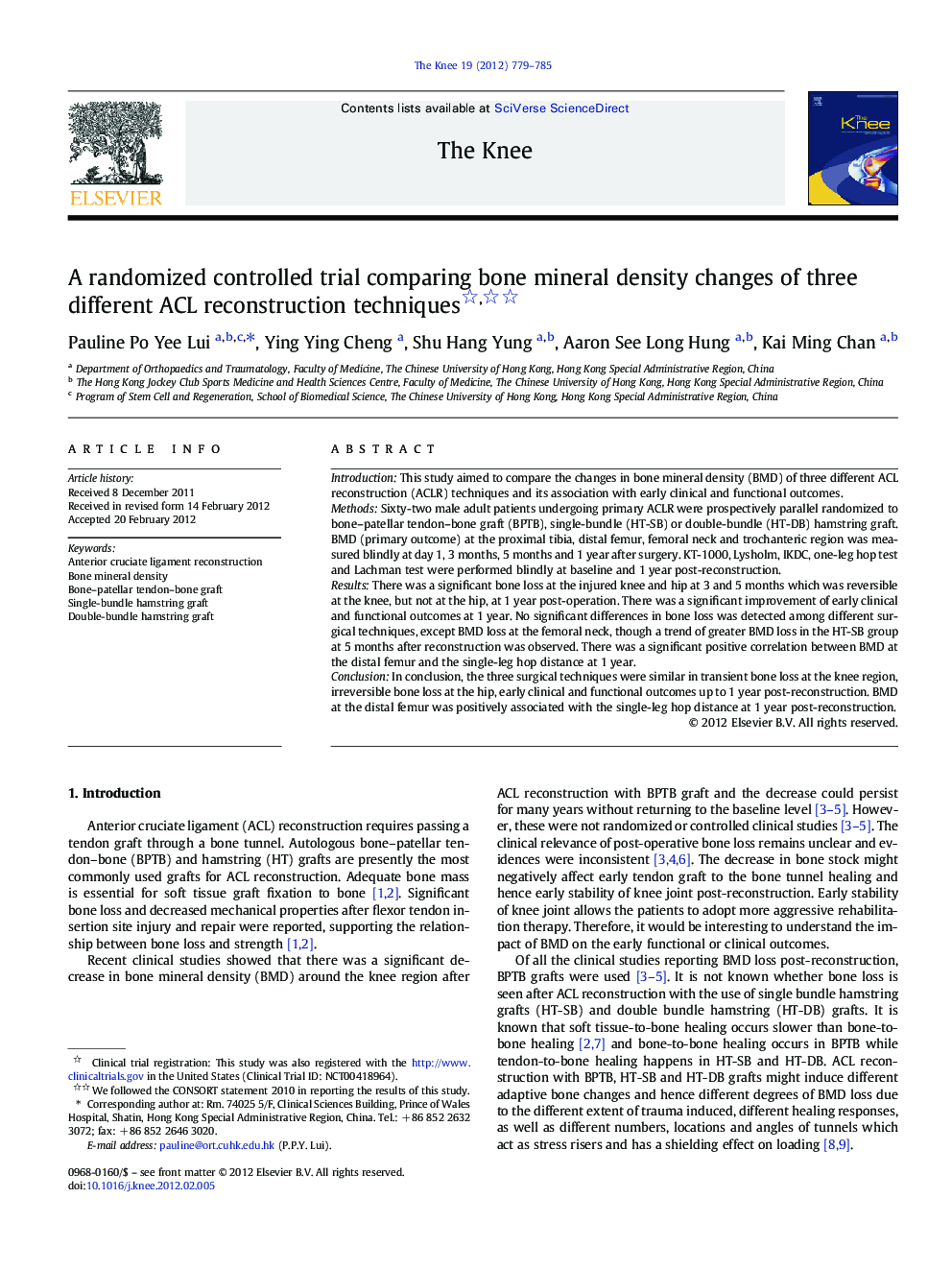| Article ID | Journal | Published Year | Pages | File Type |
|---|---|---|---|---|
| 4077747 | The Knee | 2012 | 7 Pages |
IntroductionThis study aimed to compare the changes in bone mineral density (BMD) of three different ACL reconstruction (ACLR) techniques and its association with early clinical and functional outcomes.MethodsSixty-two male adult patients undergoing primary ACLR were prospectively parallel randomized to bone–patellar tendon–bone graft (BPTB), single-bundle (HT-SB) or double-bundle (HT-DB) hamstring graft. BMD (primary outcome) at the proximal tibia, distal femur, femoral neck and trochanteric region was measured blindly at day 1, 3 months, 5 months and 1 year after surgery. KT-1000, Lysholm, IKDC, one-leg hop test and Lachman test were performed blindly at baseline and 1 year post-reconstruction.ResultsThere was a significant bone loss at the injured knee and hip at 3 and 5 months which was reversible at the knee, but not at the hip, at 1 year post-operation. There was a significant improvement of early clinical and functional outcomes at 1 year. No significant differences in bone loss was detected among different surgical techniques, except BMD loss at the femoral neck, though a trend of greater BMD loss in the HT-SB group at 5 months after reconstruction was observed. There was a significant positive correlation between BMD at the distal femur and the single-leg hop distance at 1 year.ConclusionIn conclusion, the three surgical techniques were similar in transient bone loss at the knee region, irreversible bone loss at the hip, early clinical and functional outcomes up to 1 year post-reconstruction. BMD at the distal femur was positively associated with the single-leg hop distance at 1 year post-reconstruction.
